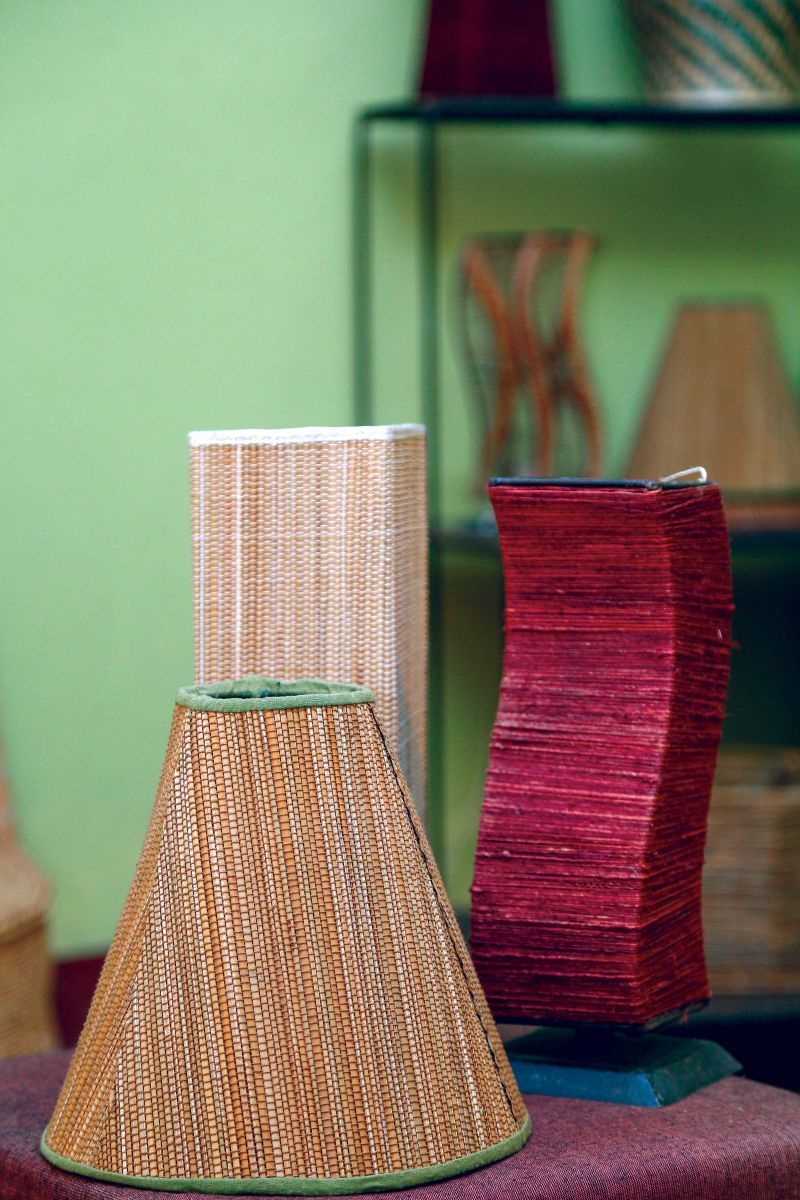When I was young, I remember hearing my parents tell stories about their childhood, times when They had to sit on woven straw mats (sukuls) at school, as there were no desks and benches Available then. As a child, I collected flowers in dhakkis (woven baskets). Go through any old house in Nepal, and you are likely to find nanglos, dokos, dhakkis, sukuls, and similar things Lying around or stuffed in the store room. Weaving things out of straw, bamboo, and wild grass or agricultural byproducts has a long history in Nepal.
“There are more than a hundred recognized ethnicities in Nepal, and they each have their own traditions and traditional woven crafts,” says Shyam Badan Shrestha, chairman of Knotcraft. Shrestha describes traveling across Nepal in search of raw materials for her industry and discovering these crafts. “These products are made by the locals from the materials found locally, and they are all designed to suit the locality.” She adds. “For example, the Newars of Kathmandu used straw sukuls on the ground to insulate from the cold. Tharus in the Terai had bhakkis, and Gurungs living in the hills had bhangra, a kind of cloth made from allo which they used to wear. There were numerous products being made and used locally across Nepal, like chattais, woven bamboo baskets, and more.”
These crafts, and those who make them, may not have always gotten the respect they deserve, But they have played an important part in the traditional lives of people. Many of these products had very important cultural and traditional significance and were often necessary parts of rituals and life events.
With the introduction of modern merchandise in Nepali markets, the use of these woven products may not be as widespread as they used to be, but there are many who are working to bring them back to light.
These woven baskets, mats, and similar crafts are as Nepalese as they come. “These things are made entirely form Nepali raw materials, so we don’t have to rely on any foreign country for materials.” Shrestha says. Everything—from the materials to the designs—to the making of these products is entirely Nepalese. Moreover, since the ones who hold the knowledge about making these materials are often women, they are highly benefited by the making of these products.
 “Women are usually the ones who know about traditions and preserve them. And, when women are empowered financially, the effects of this snowball into benefits for the whole family. She can better take care of her family, their health, and their education, and impact future generations,” she says. “So, we gave them the skills and helped them utilize the skill to earn Income, which empowered them. Seeing the rise in their self-esteem afterwards makes you feel very happy.” she adds.
“Women are usually the ones who know about traditions and preserve them. And, when women are empowered financially, the effects of this snowball into benefits for the whole family. She can better take care of her family, their health, and their education, and impact future generations,” she says. “So, we gave them the skills and helped them utilize the skill to earn Income, which empowered them. Seeing the rise in their self-esteem afterwards makes you feel very happy.” she adds.
Besides empowering women, marketing these traditional crafts and creating an economic incentive to produce them does a lot in terms of preserving these crafts and keeping them alive. It makes use of local raw materials and creates an economy around it. From the production, harvesting, and processing of the raw materials to the making and marketing of the products, it establishes a chain that provides employment to many and adds to the local economy. It also incentivizes locals to keep their traditions alive. Even those who had stopped creating and using these products now found they had a reason to start again.
Making use of local materials that would otherwise go to waste increases the sustainability of the industry and makes it more environmental-friendly, particularly when compared to many of the items you would find these days in the market. These products are made without creating any pollution, and with minimal carbon emitted in their production, as using local products removes The need for shipping of raw materials back and forth, a major source of carbon emissions, just one of many unsustainable practices used in big industries.
A lot of these crafts are being modernized to meet the needs and requirements of today’s generations. Although there was a lot of traditional knowledge and traditional craft in Nepal, some were going to waste and slowly losing ground, which is why people like Shrestha are finding ways to incorporate these traditional crafts into creating modern amenities. A good example of this was a traditional dhaka from the Terai that had been fashioned into chairs at Knotcraft.
Similarly, many of the materials and weaves are being experimented with to come up with new types of products that preserve the traditionality of the products, and yet meet the needs of modern life. The entire process is long and tiring, but the end results are worth the efforts.
The market for these products is also growing. “Some of the smaller products are being exported abroad, but most of our products go into the Nepali market. Young people, art lovers, and environmentally conscious people are more interested in these products, though the wider general public has yet to understand the value of these items,” Shrestha says.
To improve this sector further, more research and development needs to happen, especially at the government level, according to Shrestha. But, looking at the current scenario, we have reason to feel rather optimistic about the future of Nepal’s traditional crafting techniques.












